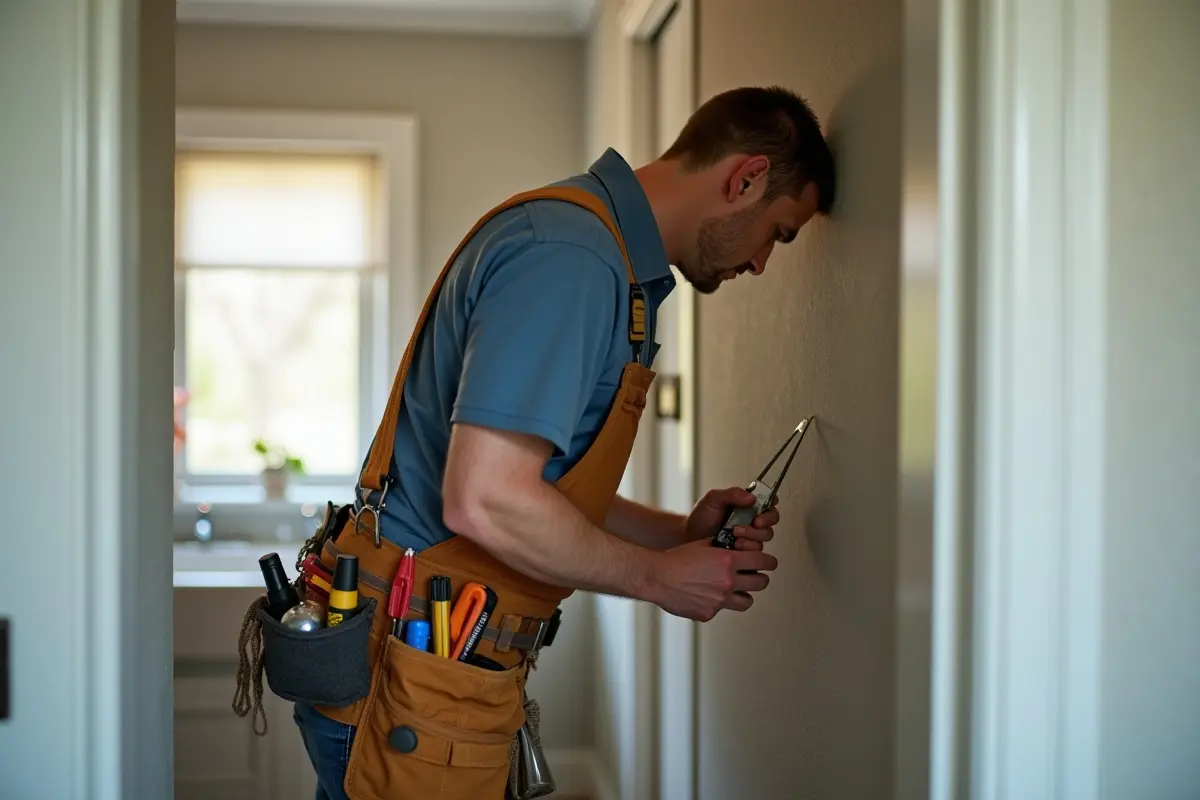Home renovation is an exciting journey, but it’s often shrouded in misconceptions. Common myths about home renovation can lead homeowners astray, causing unnecessary stress and financial strain. These myths range from underestimating costs to overestimating DIY capabilities, affecting project outcomes and homeowner satisfaction.
This article aims to separate fact from fiction in the world of home improvements. By debunking these myths, homeowners can approach their renovation projects with confidence and realistic expectations.
DIY Delusion: When to Call the Pros
Assessing your skill level
Many homeowners try DIY renovations to save money and feel accomplished. However, it’s important to assess your skills honestly. While tasks like painting or small repairs are manageable, complex projects often need professional expertise.
Homeowners should consider their experience, available time, and comfort level with various tools and techniques. It’s essential to start small and gradually build skills before attempting more challenging renovations.
Hidden costs of DIY
While DIY projects can seem cost-effective initially, they often come with hidden expenses that can quickly add up. Inexperienced renovators may underestimate material costs, make costly mistakes, or need to purchase specialized tools they’ll only use once.
Additionally, DIY projects typically take longer to complete, potentially leading to extended periods of disruption in the home. If errors occur, hiring professionals to fix mistakes can end up being more expensive than if they had been hired from the start. It’s important to factor in these potential costs when deciding whether to DIY or hire a pro.
Projects best left to professionals
Certain home renovation tasks are best left to experienced professionals due to their complexity, safety concerns, or legal requirements. Electrical work, plumbing, structural changes, and roofing are prime examples of projects that often require specialized skills and knowledge of building codes.
Attempting these without proper expertise can lead to dangerous situations, such as electrical fires or water damage. Additionally, projects involving gas lines or lead paint removal should always be handled by certified professionals to ensure safety and compliance with regulations.
By recognizing when to call in experts, homeowners can avoid costly mistakes and ensure their renovations are completed safely and to a high standard.
Budget Myths: Understanding True Renovation Costs
Realistic cost expectations
A common myth in home renovation is underestimating true costs. The average home renovation cost is approximately USD 49979.00, but this can vary widely based on factors such as the size of the space, age of the home, and location. It’s crucial to set realistic expectations from the start to avoid financial surprises later on.
Factoring in unexpected expenses
Unexpected costs often arise during renovations, so set aside a 10-20% contingency fund. Hidden expenses may include structural repairs, code upgrades, permits, and material price changes. Planning for these helps homeowners manage budgets and avoid financial strain.
Long-term value vs. immediate costs
When planning renovation costs, consider both immediate expenses and long-term value. While some upgrades may not fully recoup costs, they improve functionality and quality of life. Energy-efficient upgrades can also lead to long-term savings on utility bills. Balance financial considerations with the comfort and enjoyment renovations bring.
Timeline Trap: Managing Renovation Expectations
Factors affecting project duration
One of the most common myths about home renovation is the belief that projects will always adhere to a strict timeline. In reality, numerous factors can influence the duration of a renovation. The scope and complexity of the project play a significant role, with larger or more intricate renovations typically requiring more time.
Additionally, the planning and design phase, which involves finalizing designs and selecting materials, can be time-consuming but crucial for streamlining subsequent stages.
Planning for delays
To avoid falling into the timeline trap, it’s essential to plan for potential delays. Unexpected issues often arise during renovations, such as hidden structural problems or complications with electrical or plumbing systems. Building a buffer into the timeline can help account for these unforeseen circumstances.
It’s also important to consider the availability of contractors and materials, as popular professionals may have busy schedules, and custom items might have longer lead times.
Balancing speed and quality
While homeowners may be eager to complete their renovations quickly, it’s crucial to strike a balance between speed and quality. Rushing through a project can lead to subpar results and potentially costly mistakes. Instead, focus on effective communication with contractors and maintaining realistic expectations.
Regular updates and open dialog can help manage timelines and ensure that quality isn’t compromised in the pursuit of speed. By understanding the complexities involved in home renovations and planning accordingly, homeowners can navigate the process more smoothly and avoid common home renovation myths about timelines.
Permit Predicaments: Navigating Legal Requirements
When permits are necessary
Permits are essential for renovations that alter a home’s structure, footprint, or involve electrical, plumbing, or mechanical systems. This includes adding walls, building additions, and installing new circuits or fixtures. Always check local requirements, as permit rules vary by location.
Consequences of skipping permits
Skipping permits can lead to serious consequences, including hefty fines that may increase daily during construction. Homeowners might be forced to remove unpermitted work, complicating future home sales and risking denied insurance claims. Retroactively obtaining permits is often more costly and time-consuming than securing them upfront.
How to obtain proper permits
To obtain permits, contact your local building department and submit detailed project plans, including blueprints. Some areas accept online submissions; others require in-person applications. Plans are reviewed, and revisions may be needed before approval.
Once approved, you’ll pay fees and receive the permit. Inspections throughout the project ensure compliance with building codes and permit requirements.
In the end, successful home renovations are about striking a balance between dreams and reality. By recognizing when to call in professionals, setting realistic budgets with room for unexpected costs, planning for potential delays, and navigating legal requirements, homeowners can turn their vision into reality.
Frequently Asked Questions
When not to renovate a house?
Avoid renovating if the home has significant structural problems or repairs that exceed your budget. Renovation may not be wise if the property’s market value won’t increase enough to cover costs, or if the home is in an area with declining property values. Reconsider renovations if you’re facing financial instability or plan to sell soon.
How to determine if a house is worth renovating?
A house is worth renovating if the cost of improvements aligns with your budget and boosts its overall value. Consider the home’s structural condition, location, and potential return on investment. Also, think about whether the renovations will meet your long-term needs and lifestyle.
How to tell if a house is a money pit?
A house may be a money pit if it has major, hidden issues like foundation cracks, old wiring, or extensive water damage. Warning signs include persistent mold, faulty plumbing, outdated systems, and frequent repairs. Professional inspections can reveal costly problems before committing to renovations.
What is the hardest room to renovate?
The kitchen is often the hardest room to renovate due to its complexity and need for plumbing, electrical work, and precise layout planning. Upgrading appliances, countertops, and cabinetry while maintaining functionality adds to the challenge. Bathrooms are also complex due to similar requirements.




